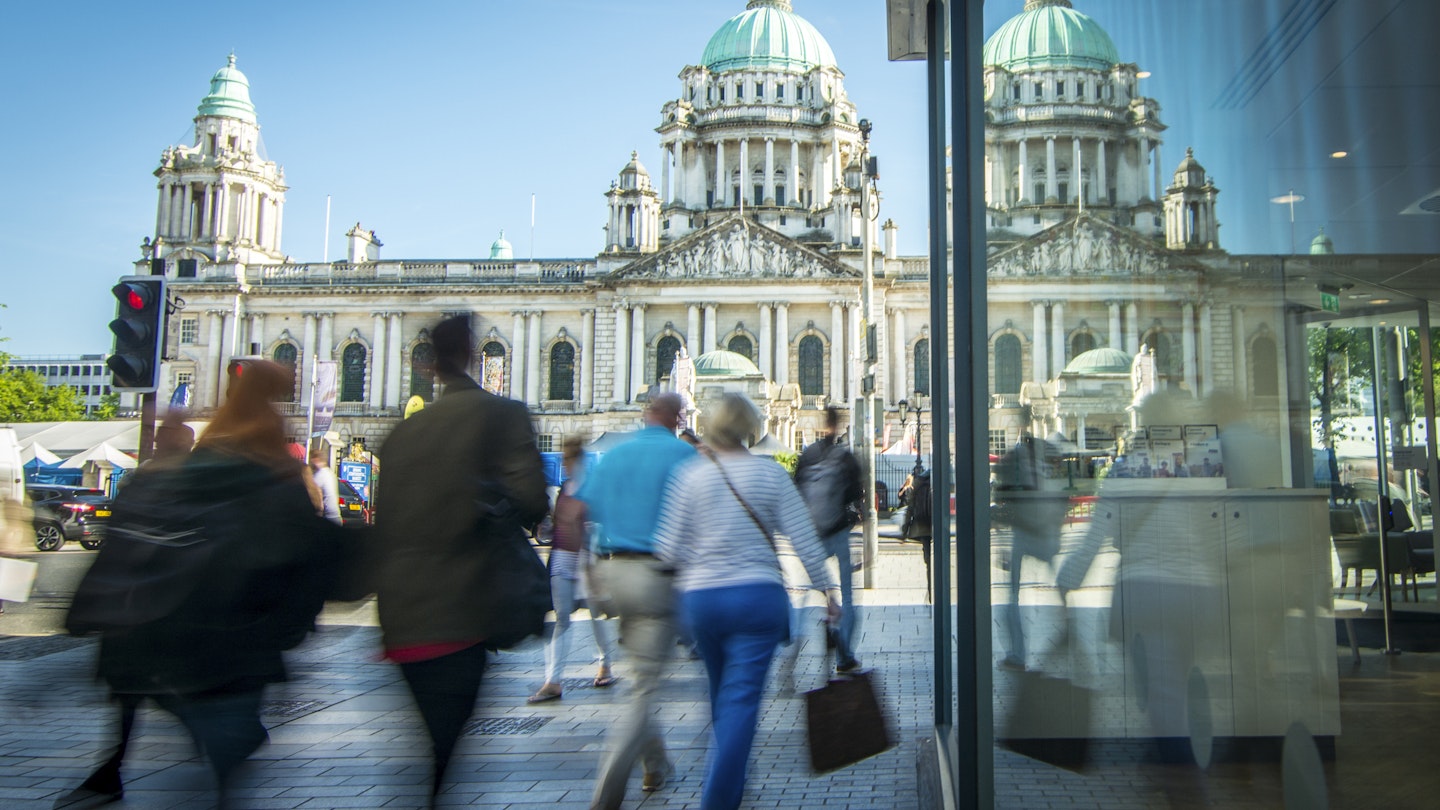Getting Around Belfast: Your Guide to Efficient Transportation
As a compact capital city, visitors will find Belfast mainly flat and pleasingly walkable. It’s also pretty well served by public transportation, so you can rely on Metro and Glider services instead of hiring a car. Exploring on Belfast Bike is often a better alternative to pricey taxis, too.
Public Transportation in Belfast
There is no underground rail network in Belfast, and limited suburban rail service, so the most common means to get around is by road. The city’s wide bus and bus-tram hybrid services make it convenient to reach various destinations across the city.
Express Bus Services from Airports
Belfast is served by two airports – Belfast International Airport and Belfast City George Best Airport. Belfast International is located approximately 13 miles northwest of the city and is frequently served by charter carriers to sunnier destinations, as well as a base for easyJet. The best way to get from the airport to the city is by bus on the Airport Express 300 service, costing £8 or £11.50 return (within a month). This bus journey takes roughly 30 minutes, depending on traffic.
Belfast City George Best Airport, named after the legendary footballer George Best, emphasizes regional connections to England and Scotland. It is located only a few miles from the city center, making it very accessible. The suburban railway service operates to Sydenham railway station, which is about a 10–15 minute walk from the terminal. A single ticket to Great Victoria Street station costs £2. Alternatively, the Airport Express 600 bus takes approximately 10 minutes to the Europa Buscentre for £2.60. For private transport, taxis and Uber services are available from outside the terminal building, with fares to the city center ranging from £10 to £15.
No Need for Rental Cars in Central Belfast
If you’re staying in Belfast city center or its inner neighborhoods and solely looking to explore the city itself, hiring a car is not necessary. Even for day trips outside the city, careful planning of the public transportation options could suffice. However, if you want to explore more of Northern Ireland or the Republic of Ireland, you may prefer the convenience of renting your own vehicle.
Metro and Glider Services in Belfast
This might appear confusing to visitors who see the word “Metro” on maps since Belfast doesn’t have an underground metro, nor are there plans for one. “Metro” refers to the city bus services, operated by Translink. Buses are pink, making them easy to spot, and a number of routes connect the city comfortably.
Complementing the bus service is the Glider, operating since 2018. This system consists of two routes and operates via long articulated buses, resembling a modern tram-bus hybrid. The Glider is considered a more sustainable transport option and benefits from dedicated bus lanes for maximum reliability, with services usually running at 10-minute intervals. Passengers can enjoy USB chargers and Wi-Fi on board, with routes connecting the city center to the popular Titanic Quarter.
Understanding Ticket Zones for Metro and Glider Services
There are various fare options for both Metro and Glider services, which can be confusing. If purchasing single tickets, you’ll be prompted about coverage for the “inner zone”, “extended zone” or “city zone”. The heart of the city is the cheaper inner zone (£1.60), while the city zone (£2.10) extends outward, and beyond that comprises the extended zone (£2.50).
To avoid confusion, an off-peak day ticket allows unlimited use on the entire network after 9:30 am for only £3. Download the Translink M Link app to store tickets on your smartphone or purchase them from machines at Glider stops.
Day Trips via Belfast’s Main Train Stations
There are two main stations in Belfast: Lanyon Place and Great Victoria Street. Lanyon Place serves the Dublin–Belfast “Enterprise” express service and is conveniently located near Waterfront Hall, Victoria Square, and St George’s Market. Great Victoria Street shares the same site as the Europa Buscentre. Trains from here can take you to Derry (Londonderry) and Portrush on the north Antrim coast, as well as east to Holywood and Bangor.
It’s often easier to walk between these two stations rather than take a train; the walk takes around 20 minutes, compared to an eight-minute train ride.
Exploring by Foot or Bike
Central Belfast is walkable – with many pedestrianized spaces, particularly in shopping districts. Most attractions are accessible within a 20 to 30-minute walk. There is also a bike rental scheme called Belfast Bikes, with 30 stations throughout the city. The pay-as-you-go option is £1 for 30 minutes, making it an affordable way to explore.
Taxi Services in Belfast
Visitors can find dedicated taxi ranks throughout the city. It is advisable to choose the vehicle at the top of the rank and inquire about destination costs in advance. Many drivers accept digital payments, but it’s prudent to check beforehand. For cash payments, having the exact fare is advisable, as some drivers may not carry change. Alternatively, you can order directly from local taxi companies like Value Cabs.
Accessibility in Belfast
Belfast city center has wide pavements and is mostly flat, making it a great city for mobility. Most trains and buses operated by Translink meet accessibility standards. However, for Ulsterbus, Goldline, and CitySightseeing services, it is recommended to inquire ahead about vehicle accessibility. Guide dogs are welcome on all services, including taxis.
Experience the Belfast Glider
Since its introduction in 2018, the Glider has greatly enhanced the city’s transport network. It connects various popular destinations, such as Lanyon Place, Titanic Quarter, City Hall, and Stormont. With modern designs offering air conditioning, Wi-Fi, and USB charging, this service runs generally from 5 am until 11 pm.





